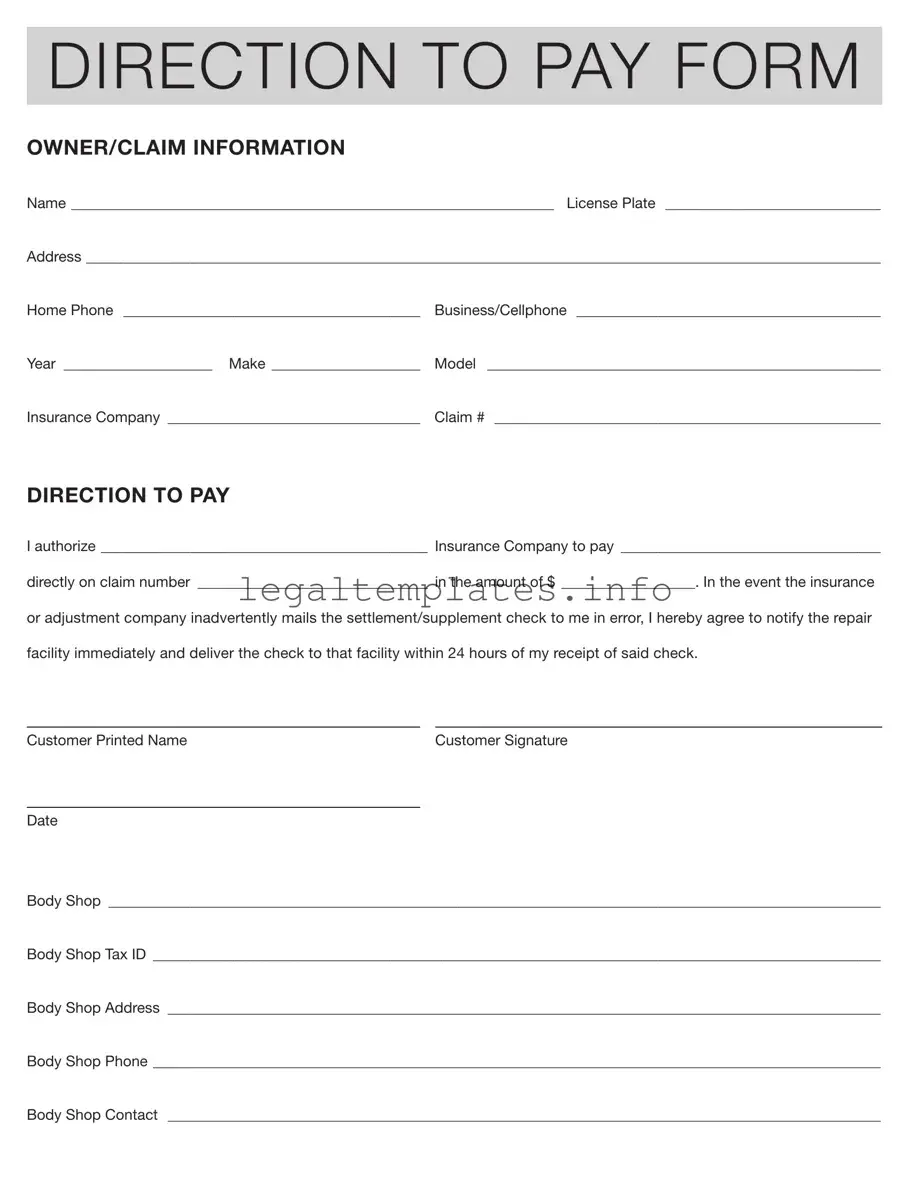The "Letter of Authorization" shares similarities with an "Authorization and Direction to Pay" form since both documents involve granting permission to a third party. In a Letter of Authorization, an individual or entity permits another party to take specific actions on their behalf, often in various contexts like banking, medical decisions, or legal representation. This similarity lies in the foundational concept of delegated authority, although the specifics of the authorization may differ in scope and application.
A "Power of Attorney" document is another legal instrument that bears resemblance to the Authorization and Direction to Pay form. Power of Attorney allows one person to grant another individual the legal authority to act on their behalf in financial or personal matters. The critical similarity is in the delegation of authority, yet a Power of Attorney often offers a broader range of powers beyond just directing payment, including transaction handling, asset management, and legal decisions.
The "Medical Release Form" permits healthcare providers to share an individual's medical information with designated parties. Like the Authorization and Direction to Pay form, it is based on the principle of authorization. Although one pertains to financial transactions and the other to personal health information, they both require explicit consent from the individual concerning who can receive sensitive information or funds.
A "Direct Deposit Authorization Form" is used to arrange electronic payments directly into bank accounts and shares a functional similarity with the Authorization and Direction to Pay form, focusing on the payment process. Both authorize the transfer of funds, but while the former deals with routine transactions like salaries or refunds, the latter typically relates to specific, often one-time, payments or settlements.
"Liens Release Forms" signify that a lienholder relinquishes their interest in an asset, typically after a loan affecting that asset is paid off. The similar aspect with the Authorization and Direction to Pay form lies in the release or transfer of claim over assets or funds. However, the Lien Release is more about confirming that an obligation has been satisfied, thereby removing any claim against the asset.
The "Warranty Deed" transfers property ownership from a seller to a buyer, ensuring the new owner that the property is free from debts or liens. The connection to the Authorization and Direction to Pay form is the concept of transferring rights or claims, albeit in different contexts—one transferring property rights, the other directing payment to a third party.
An "Insurance Claim Form" is used to request payment from an insurance company for a covered loss or service. This form parallels the Authorization and Direction to Pay in its purpose to initiate the transfer of funds based on an agreement or policy. Both forms serve as critical documents in the transaction process between parties under predetermined conditions.
A "Demand for Payment Letter" typically serves as a formal notice requesting payment that is due under the terms of an agreement and shares the underlying intent with the Authorization and Direction to Pay form—to procure payment. However, whereas the Authorization form facilitates payment based on mutual consent and pre-existing arrangements, a Demand for Payment Letter may be used in scenarios where there is reluctance or delay in payment.
Lastly, the "Beneficiary Designation Form" used in life insurance or retirement accounts, designates individuals or entities as recipients of funds upon the policyholder's death. It shares with the Authorization and Direction to Pay form the basic principle of directing where and to whom funds should be disbursed. While the former deals specifically with posthumous financial matters, both documents guide the distribution of funds to designated parties.

